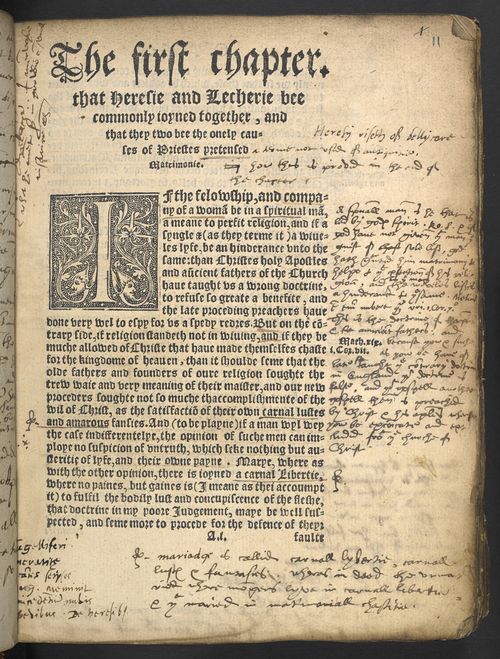
This post is a part of the A to Z Challenge. Every day (minus Sunday’s) during April in 2015 I will be making a post related to a literary device which starts with a particular letter of the alphabet. I have a general idea that these posts will be describing the same characters as they go through their lives, but I haven’t written all the posts yet so no promises!
Gloss – As a verb, to gloss is to write a scholarly or explanatory commentary on another text. This practice was common among medieval scribes and writers, particularly those commenting on biblical texts, who would write extensive glosses in smaller handwriting in the margins of bibles. Modern editors of scholarly editions often add their own glosses to literary works in the form of footnotes. See criticus apparatus. As a noun, a gloss is the actual written commentary itself. Glossation is the act of making such commentaries.
Traditionally glossation is the act of hand writing in the margins of a novel. Yet it can be used as a literary device within ones novel to gain a new layer of depth and believability to the world. I have two stories whom use this technique with such skill that they have a permanent spot on my bookshelf.
The first is the Bartimaeus Trilogy, a story about a human who summons a djinni. The story is written by said djinni and involves comments in the margins to help explain why he did what he did or with comments on how the djinni world works. It works as a wonderful tool to understand the personality of the djinni and to explain how the world works without slowing down the action.
The second is The Way of Kings. In this novel much of the world is divided between things that men and women are allowed to do. Men aren’t supposed to read, but women are. It’s revealed that while women read out loud to the men they will also sometimes write notes in the margins for the other women who will read it in the future. Special messages for those interested in that topic. It struck me as such a wonderful little detail about the world, yet with the potential to change the entire plot! What if the meaning of those comments is nothing to most women, but then they accidentally get read out loud and then men realize they have been misinterpreting the book this entire time. Or a woman is reading two different versions of the book and one has a comment on the side which starts to unravel one of the many mysteries within this book?
Quick comment that I’m not done with The Way of Kings yet. It’s a 45 hour audio novel which I only listen to when I’m driving, so I still have a while to go. If either of those things happens I didn’t know about it!
